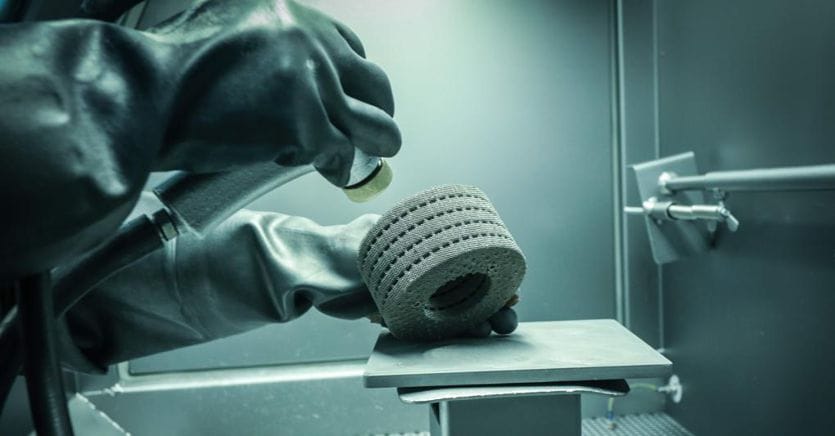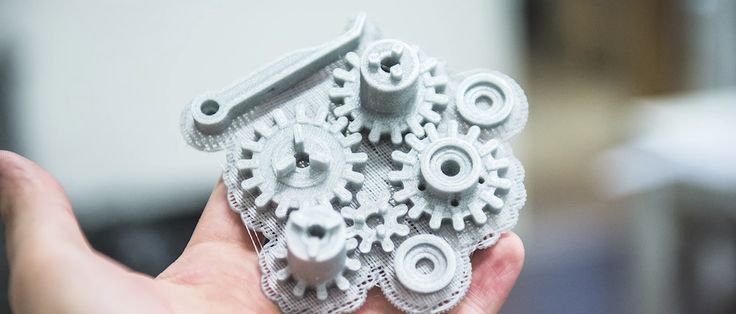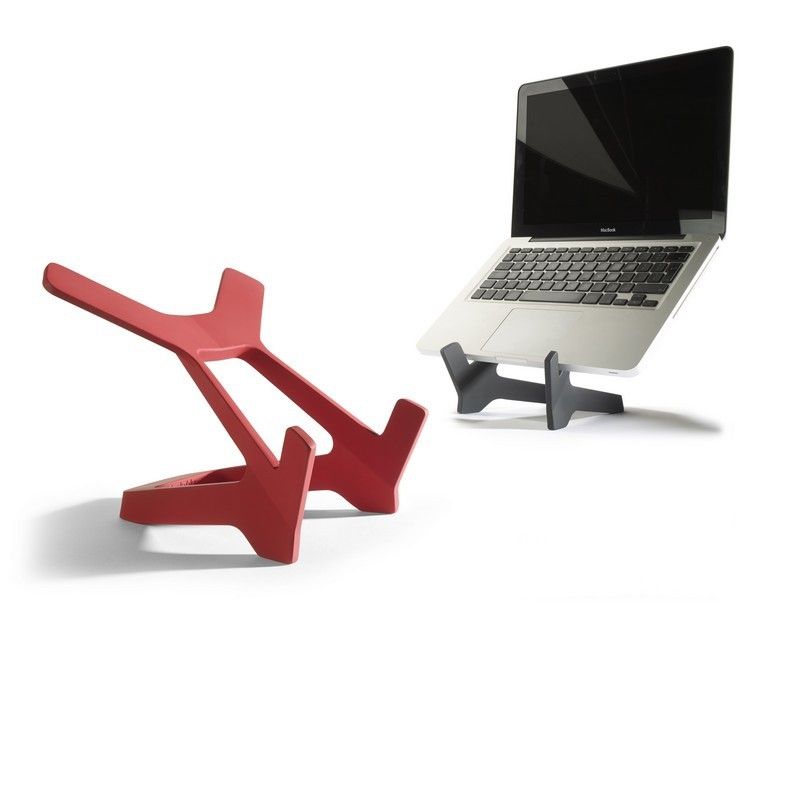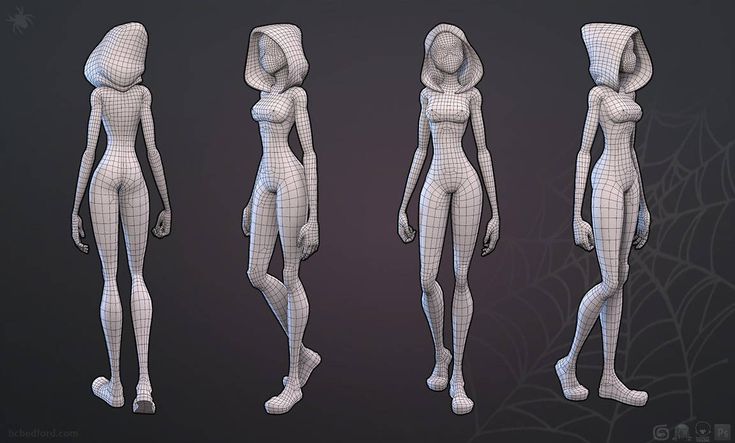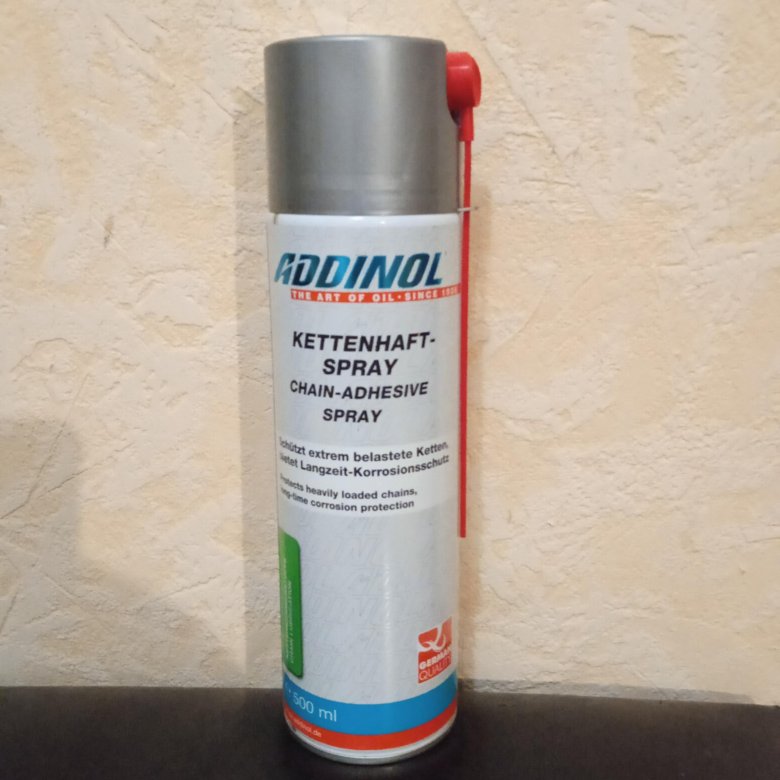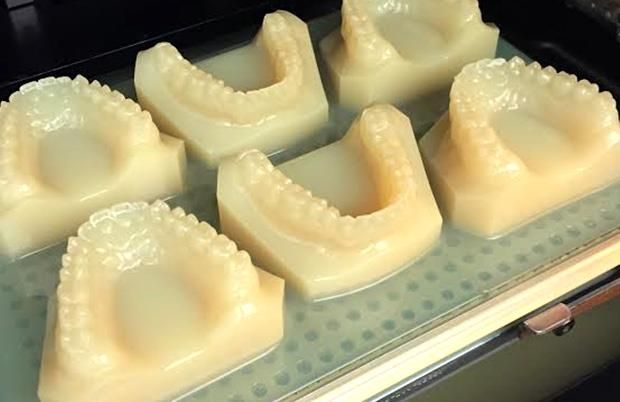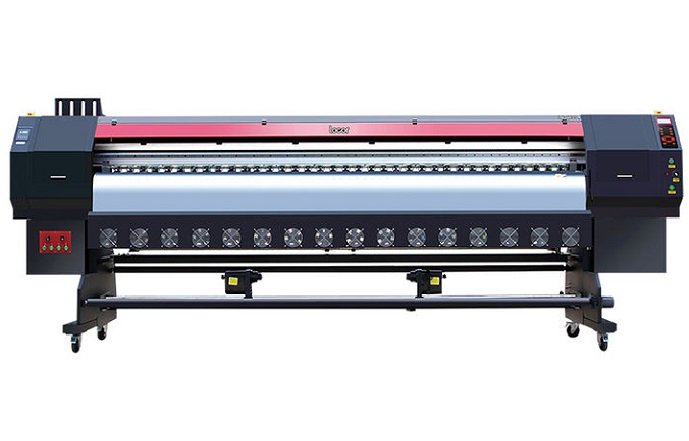3D printer filament recycling
Filabot EX6 Filament Extruder - Standard Series
- Description
- Specs
- Videos
The Filabot EX6 extruder is our professional-level system, designed to be the best system for developing new polymers and for production of filament. The EX6 features a three-stage extrusion screw made from hardened and polished high-carbon stainless steel. The screw can be easily removed for cleaning and can be swapped out with the various other screw profiles to match the processing requirements of the polymer. With this new system, screws with different characteristics can be used as needed for each specific polymer, allowing screw designs to be tested and polymer output and consistency optimized. All screws have a 24:1 L/D ratio giving greater versatility and control compared to other extruders.
Click here to learn about the other available screws.
The EX6 features extrusion speed control and a 4 zone temperature control system. The speed control board includes an automatic, variable voltage control module that is engineered to regulate the precise RPM of the screw. The temperature zones are independently controlled allowing for a polymer specific heat profile.
The Filabot EX6 comes with a full one-year warranty on all parts.
Extrudable Plastics: 4043D PLA, 3D870 PLA, 3D850 PLA, Magnum 8391 ABS, and HIPS. Click here for EX6 Extrusion settings. The EX6 is also capable of processing ABS Flame Retardant, PC, PP, PS, ULTEM, PEEK, NYLON, HDPE, PETG, and WAX. Low to Higher Melt Flow Polymers. If you don't see a material listed send us a sample we can test. Click here to see our testing services.
Extrusion Rate: Over 10 pounds per hour (4.5kg per hour) - Dependant on polymer properties, filament output speed may be less. Output test is done with 4043D PLA for mass flow rate at the nozzle.
Filament Sizes: 1.75mm and 2.85mm
Material Input Size: 1/8in (3.18mm) pellets to powder
Material Capacity: Hopper - 195 cubic in (3195.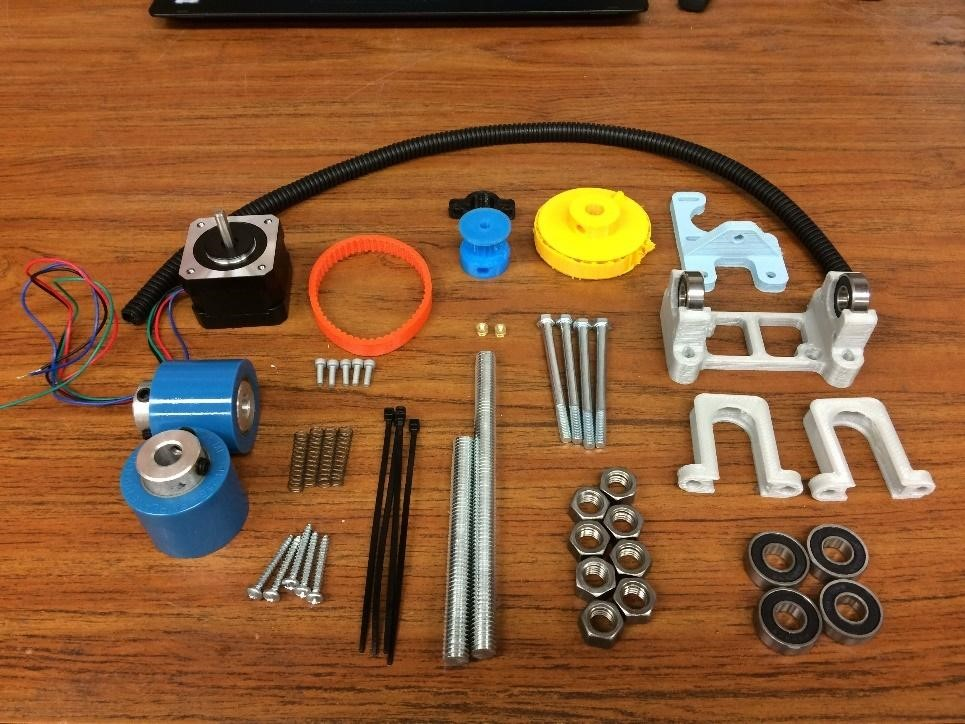 5 cubic cm)
5 cubic cm)
Screw Void - 2.37cubic in (38.8 cubic cm)
Feed Port - 195 cubic in (3195.5 cubic cm)
Temperature Control: 4 Independently PID controlled heat zones, all with active fan cooling for consistent heating
Feed Screw and Drive:
0-100rpm Speed Control
24:1 L:D Ratio Screw
16.28" Length (45.31cm)
5/8” Diameter (16mm)
1/2” Pitch (13mm)
Removable and up-gradable screw
Stainless Steel and Hardened
Click here for Screw Specs.
EX6 Includes
1. Removable Screw
1. 2.85mm Nozzle
1. 1.75mm Nozzle
1. User Manual
1. Power Cord
1. Packet of Anti-Seize
2. Packages of Purge
1. Brass wire wheel,
1. Brass pipe cleaner,
1. 10’ of copper gauze and an extension rod for the pipe cleaner
1. Screw removal tool,
1. Pair of oven mittens.
Extrusion Pressure:
3D870 running 365 - 435 psi
Max (plugged nozzle) 765 psi
Universal Power Input: 110 VAC or 220 VAC - 50 to 60hz - 1550 watts MAXIMUM
Physical Characteristics: Weight 50lbs (23kg) and dimensions of 29. 7in x 9.1in x 8.4in (75.44cm x 23.11cm x 21.34cm)
7in x 9.1in x 8.4in (75.44cm x 23.11cm x 21.34cm)
Full 1 Year Warranty
Click Here for the EX6 Dimensions
Click Here for the EX6 G Dimensions
Click Here for the EX6 User Manual
Click Here for the Ink Bird Temperature Control Manual
Check out our YouTube channel to see our systems in action!
How To Recycle 3D Printing Filament [Simple And Easy Guide]
Want to learn you can recycle your 3D printing filament and save a lot of money? This simple and easy guide shows you exactly how.
By Justin Evans
It’s often said that 3D printing is an expensive hobby to get into, but the majority of the long-term costs come from buying replacement filament. What if there was a way to decrease these costs and also decrease your environmental impact? Well, guess what? There is, and it’s easier than you might think.
What if there was a way to decrease these costs and also decrease your environmental impact? Well, guess what? There is, and it’s easier than you might think.
Now, for the time being, there is a decent upfront cost. However, by recycling old filament, you’ll be able to reclaim any materials used in prints that didn’t come out just right. Think about how much filament you’ve wasted since you began. How much money could you have saved?
Table of ContentsShow
Equipment Needed
Before you can begin reclaiming old materials, you first need two pieces of equipment: a shredder and an extruder (this is different from the one on your 3D printer). Essentially, you feed your old print into the shredder, which, as you might expect, shreds it. Then, once you have your shards, these are fed into the extruder, which heats and shapes them into something you can actually use.
So what kind of upfront costs can you expect? Well, a cheap plastic shredder costs around $250 and a basic extruder is around $300.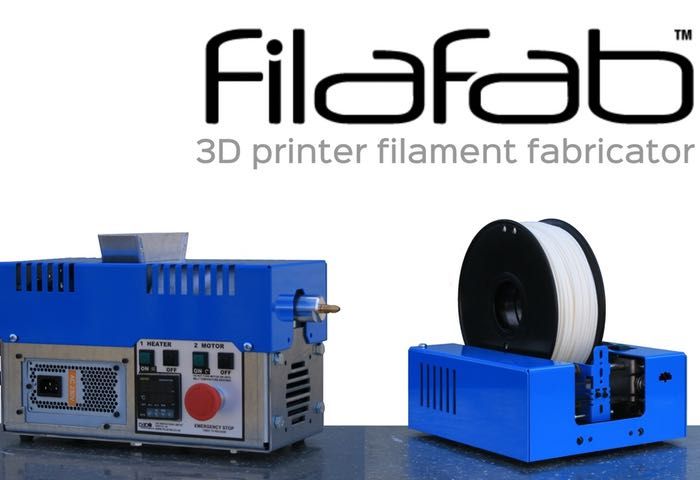 If you’re feeling adventurous, you can even make your own. These DIY solutions cost less but are fairly labor-intensive to create. So, what should you keep in mind before recycling filament?
If you’re feeling adventurous, you can even make your own. These DIY solutions cost less but are fairly labor-intensive to create. So, what should you keep in mind before recycling filament?
Rules For Recycling Filament
There are a few golden rules you must follow in order to produce usable filament. First and foremost, make sure you only shred one type of material at a time. Each filament type has diverse characteristics like melting temperature and viscosity. In fact, even combining different brands of the same material can have unexpected results.
By using only one type of filament, you lower the chance of creating unstable materials that fall apart when printing. That’s not all, though: you should also be aware that the recycled filament might have a different diameter. Really, this is all up to which type of extruder you buy.
If you find your new materials to be slightly larger or smaller, you’ll likely need to swap out your printer’s extruder for one that will accept the new filament.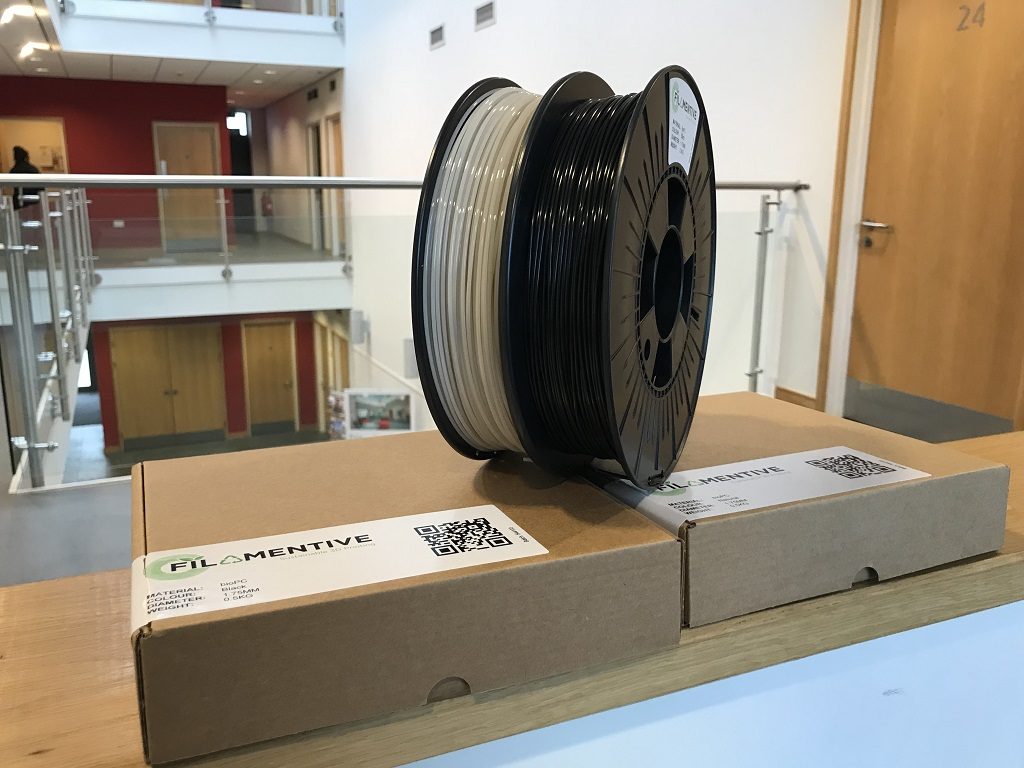 It’s crucial that you test each batch for quality though, as outlined in the graphic below.
It’s crucial that you test each batch for quality though, as outlined in the graphic below.
Finally, in order to prolong the life of your shredder, don’t just throw large objects into it. Try breaking them down first – a hammer usually does the work perfectly. If you find the plastic chunks are still too large, there’s no shame in putting them through a second time.
Conclusion
While it might seem like a lot of work, recycling filament is a far more economical way to print in the long term. This is the main advantage 3D printing has over other kinds of manufacturing; if you mess up during carpentry work, your wood is likely useless. Not so with the filament.
By following our instructions, you can achieve the impossible – creating high-quality models with almost zero waste and minimal impact on the environment. If that’s not a sign that this technology is the way forward, we don’t know what is.
How Can I Use 3D Printing For Injection Molding?
Sustainability in 3D Printing: Recycled Filament Without Sacrificing Quality
As an environmental engineer, high school teacher, and co-founder of Closed Loop Plastics (CLP), Will Amos, along with co-founders Aldrin Lupisan and Sharon To, became innovators in the field 3D printing and additive manufacturing, just a few years after graduation.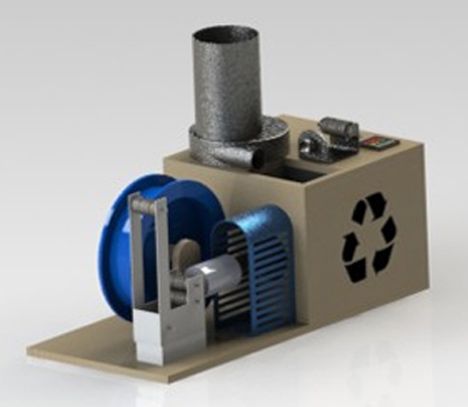
“We started in 2018, right out of college, by finding a way to recycle red “party” plastic cups into 3D printing filament. That idea has now grown into a pretty cool company that takes plastic waste and turns it into 3D printable material.”
For 4 years, Closed Loop Plastics has been creating new materials, new colors and enabling anyone with access to a 3D printer to participate in the circular economy by printing with their products.
"We give people access to certified and fully sustainable materials right in their printers without any major adjustments or changes to their process."
Will tells the story of how CLP started:
“I started 3D printing in 2015 as part of the UC Irvine team for the Solar Decathlon, which is a competition for building solar-powered houses. I was put in charge of the tool room of the future, mostly because I was a sophomore engineer and didn't know much, so I took Aldrin and a few other college buddies with me and created this tool room.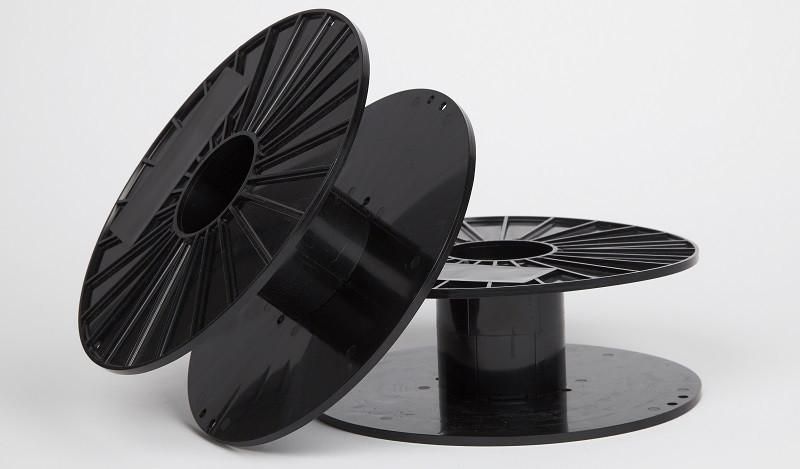 As a prize, we were presented with a 3D printer, and then for the first time we thought: “Well, we are environmental engineers, and this is an environmentally friendly economy. How can we make 3D printing sustainable? It was a neat prototype tool, but it used a lot of plastic, so we wanted to find a solution to recycle the plastic that goes back into the 3D printer.”
As a prize, we were presented with a 3D printer, and then for the first time we thought: “Well, we are environmental engineers, and this is an environmentally friendly economy. How can we make 3D printing sustainable? It was a neat prototype tool, but it used a lot of plastic, so we wanted to find a solution to recycle the plastic that goes back into the 3D printer.”
“The first thing we did was think about recycling. At first we recycled printed plastic, but then we realized that we do not have a critical mass of plastic waste from 3D printing alone. We figured out how to use waste from other sources, such as food containers, to really solve this problem and create a high performance polystyrene (HIPS) recycling element. We made it possible for people to use material for really interesting purposes, instead of sending it to the landfill. So we started thinking about how to make 3D printing green, and then it became clear that our job was to figure out how to make the use of plastic generally green on our planet.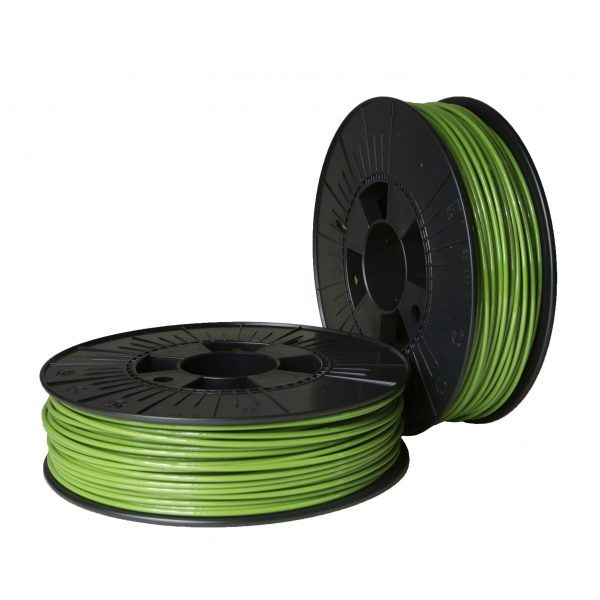
Our ideas have definitely gone big. To give you an idea, our first product we were going to sell as a company was a recycling cart (similar to an audio visual cart) and the idea was that it could be rolled around a plastic waste recycling lab. It's been a few years, and now we've reached the point where we're applying for municipal bonds to build county-level infrastructure so CLP can build these businesses that recycle hundreds of thousands of people's plastic waste every day. When we think about it, it's amazing.
We have moved from a decentralized lab-based approach to a wastewater infrastructure-based approach. I think that's cool, and it reflects the education that Aldrin and I received as environmental engineers, combined with our other co-founder, Sharon To, with a background in computer engineering. Aldrin and I can think in terms of large-scale infrastructure, and Sharon can think in terms of focused control systems, and all this has led to successful team dynamics. We trust each other and our skills, which allows us to change direction as needed and expand our scope.”
We trust each other and our skills, which allows us to change direction as needed and expand our scope.”
Closed Loop Plastics originally focused on high impact polystyrene (HIPS) material (as Will explains later), but its use opens up endless possibilities for almost all plastics.
“We chose HIPS because we needed a recycled plastic that was not so specific that it could only be used in 3D printing. We wanted something that could be used in 3D printing, but not only in it. . HIPS plastic is a widely used material for supports or for rough 3D printing. We wanted to try recycling it because it's a great thermoplastic and very easy to recycle in its original state.
After we settled on HIPS, we needed to focus on getting it clean and ready for 3D printing. We first offered it in Party Pink, which was an unpigmented color, essentially a mix of all the different HIPS plastics we put in our system. As our clients grew, they were interested in additional colors, and then we added Nebula Black. This was our first experience of introducing any additives into the process. It was a great experience that made us learn a lot. There were blockages here, there were running out of machine parts, but we realized that we could create a new, differentiated product. We are still testing for other colors and even new materials. We are going to test 3D products with new plastics like PLA, PETG and ABS. We are constantly thinking about making something more accessible to the market, because HIPS is not as widely used as other types of plastic.” .
This was our first experience of introducing any additives into the process. It was a great experience that made us learn a lot. There were blockages here, there were running out of machine parts, but we realized that we could create a new, differentiated product. We are still testing for other colors and even new materials. We are going to test 3D products with new plastics like PLA, PETG and ABS. We are constantly thinking about making something more accessible to the market, because HIPS is not as widely used as other types of plastic.” .
CLP ensures the quality of its filament by monitoring the diameter and dynamically controlling the yield. Diameter tolerance is a key point of failure for any filament, as Will explains: “We knew that if our filament had poor diameter tolerance (getting wider, smaller, changing shape, etc.) then it would be difficult for users to print with it. help. So we've built a system that monitors the ovality and diameter of the filament about a thousand times per second.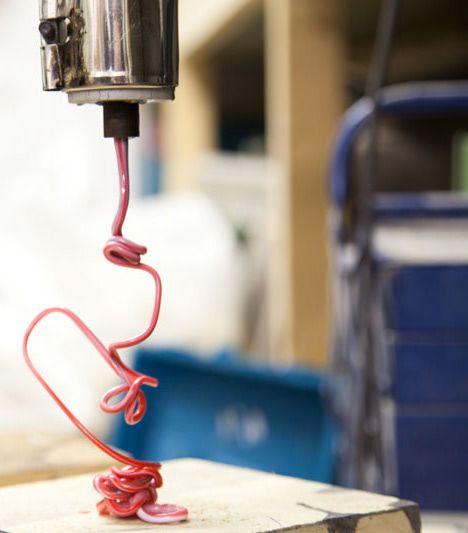 Tons and tons of samples are required, then we can adjust the speed of extrusion and material drawing. We can change it in the process. Many plastic manufacturers produce a low-quality batch and have to throw it away, so our ability to correct during the printing process is really useful.
Tons and tons of samples are required, then we can adjust the speed of extrusion and material drawing. We can change it in the process. Many plastic manufacturers produce a low-quality batch and have to throw it away, so our ability to correct during the printing process is really useful.
We are seeing an amazing expansion of our product. Since our U-HIPS is a highly durable material that does not get dirty (after processing), printing on it is easy and does not require additional surface treatment. It is easy to print from and does not require surface treatment. It can even be used on a system that is not closed. There are many things about our U-HIPS product that make it truly unique, allowing manufacturers of any experience level to participate in the circular economy at any level right now. We have a client, Leviathan 3D Printing on the East Coast, who reported receiving our product from Matterhackers and is delighted with the print results. They used it to create student projects for accessibility reasons. The students designed things to be used by other people with limited hand capabilities. It is the epitome of recyclability and the circular economy and it is great to see our product being used in this way.”
The students designed things to be used by other people with limited hand capabilities. It is the epitome of recyclability and the circular economy and it is great to see our product being used in this way.”
CLP has built a solid fan base that enjoys using its products, and manufacturers have found some really innovative uses for it. The company recently featured on their blog some fantastic handheld body surf planes made by an Orange County High School teacher. He surfaced and painted them, and they look like a finished product.
“We had a lot of people in the early days who thought it wouldn't get accepted because it was too hard stuff to use,” Will explains. “As our product has grown and improved in quality, we have seen many people adopt it and dedicate themselves to making it work on their systems. We have people prototyping in their labs, students using it for various projects, and even a few professional prototyping agencies using it to create all sorts of cool things.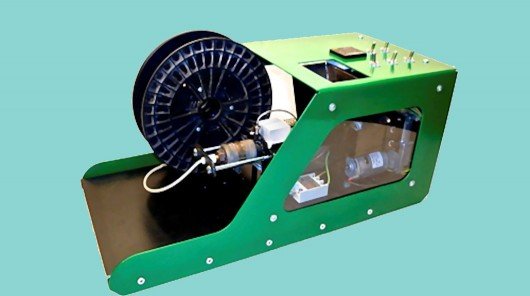 "0008 .
"0008 .
We have made great strides in raising funds this year and continue to gain momentum in yarn production as we continue to expand our rapid production capabilities and explore new materials in this area. Expanding our material portfolio and expanding our workforce in Long Beach, California are some of the goals we continue to work towards. Over the next 5 years, we hope to expand and open three new facilities that can process 2,000 to 10,000 pounds of plastic per hour and really start recycling plastic so we can get more recycled material into the hands of more manufacturers and manufacturers. In the short term, we also hope to expand our reach into the injection molding world to demonstrate the versatility of our products. We want to let people know that in addition to 3D printing, we can make an impact on the plastics world as a whole through our process to give plastic waste a new life in the form of recycled filaments, pellets.” .
3D printing plastic recycling - 3dimg
2021 is declared the year of ecology
Today we will talk about ecology and plastic recycling for further 3D printing
All people familiar with 3D printing know that a certain amount of plastic remains during the printing process and after it, which must be disposed of in an ecological way is quite difficult.
In 2012, young graduates of the Delft University of Technology decided to fight plastic waste and came up with The Perpetual Plastic Project.
The project has two goals: to organize local recycling of plastic with the participation of the population, and to inform consumers about new ways of recycling. To achieve its goals, the company organized a mini-factory, open to visitors, where you can visually get acquainted with the stages of plastic recycling, and even take part in the recycling of plastic cups and the creation of new products from the raw materials obtained.
Plastic cups are recycled as follows: first they are thoroughly cleaned, washed and dried in special equipment. Dried cups are crushed, melted and converted into filaments for 3D printing. The resulting filaments are fed into a 3D printer.
You can watch a video from the creators of The Perpetual Plastic Project by clicking on the link below:
https://youtu.be/7kj56Bi2HX0
You can also recycle plastic waste at home: 3D printing is recommended to use the following types of PET bottles:
- Blue.
 Such bottles have the hardest plastic, but when melted, it will be the most fluid of all.
Such bottles have the hardest plastic, but when melted, it will be the most fluid of all. - White and green. The plastic of these bottles is softer than that of the blue ones. In molten form, the material is thicker.
- Brown. These bottles have the softest plastic. When molten, it is highly viscous (similar to ABS filament).
Preparation steps:
- Thorough bottle washing
- Bottle cutting.
Use a utility knife, scissors or a bottle cutter to cut the bottles into a spiral (ribbon) approximately 10 mm wide
- Melting plastic bands in an oven at 180︒C, time depends on the amount of plastic (It takes about 40 minutes to melt 10 plastic bottles.)
- Cooling and drying of molten plastic.
After melting, the plastic must be completely cool. All excess moisture will evaporate from the material, and it will crystallize. In appearance, the polymer resembles glass.
- Plastic crushing
The cooled material must be ground in a crusher to a finer fraction
- Turning plastic dust into printing filament.

crushed plastic is poured into a vertical extruder. The rotating screw moves the ground polymer to the bottom of the device to the nozzle with heaters. The plastic starts to melt.
Molten PET exits from the nozzle into a bowl of cold water placed on the turntable. The rotation of the table will prevent sticking of the material. The thread must be cooled as quickly as possible so that it becomes flexible and transparent. In this case, it can be used for 3D printing.
- Plastic drying before use
If there is a lot of moisture, a filament of molten plastic will come out of the extruder as foam. It is recommended to dry the skeins of thread in a closed container at a temperature of 50–60 °C. To do this, you can use the oven or simply place the container on the radiator.
When using recycled filament, please note that prints may not be of the expected quality. Therefore, we use only primary material and are responsible for the quality of products.



